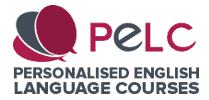Cambridge B2 First Speaking Test – Top Tips to Get a High Score
This post offers plenty of tips on how to ace the Cambridge B2 First speaking test.
The advice which follows should also benefit candidates preparing for their C1 Advanced (previously CAE) exam due to the similar structure of the speaking tests.
First, I will offer five tips to make yourself a formidable Cambridge B2 First speaking test candidate. Then, after sharing some information and a link regarding the B2 First assessment scales for speaking, I will analyse a past B2 First speaking test which is available for viewing on Youtube. Finally, I will explore ways candidates can expand their vocabulary and knowledge of collocations before taking the B2 First exam.
Five top tips to ace your Cambridge B2 First speaking test
Tip 1 - Listen with interest
Merely listening to your partner is not enough. In parts 3 and 4 of Cambridge speaking exams, you also need to react to what your partner says in order to maintain conversational flow.
Tip 2 - Move the interaction forward
Very good candidates are able to take control of a conversation and move it forward. Such candidates are conscious of the need to avoid excessive dwelling on a particular point and are able to bring the conversation to a conclusion.
Tip 3 - Maintain eye contact
Sure, body language and making eye contact with the other candidate and body language do not appear in the marking rubrics.
However, you should encourage your partner through eye contact and positive body language for the purposes of generating solid interactive communication.
Your life will be a whole lot easier if you’re in the company of a confident partner as opposed to a discouraged bag of nerves.
Tip 4 - Find a way of expressing yourself by paraphrasing
Even though a particular word might be on the tip of your tongue, don’t hesitate for too long. It’s ok to use different words to explain what it is you want to say. This skill is called paraphrasing and it’s one you should pay attention to when preparing for your Cambridge B2 First speaking test.
Tip 5 - Ask questions if you don’t understand something
Don’t be afraid to ask for the instructor to repeat themselves if you don’t understand an instruction or wish for something to be clarified.
Speaking assessment in the B2 First exam
You will have two examiners.
The interlocutor awards a mark for a candidate’s overall performance, using the Global Achievement scale.
The assessor awards marks for four individual criteria:
- Grammar and Vocabulary
- Discourse Management
- Pronunciation
- Interactive Communication
For all relevant information connected with the B2 First Assessment Scales, check out this Cambridge English information guide.
An analysis of a past B2 First speaking test
The following analysis pertains to this B2 First speaking text:
You can download the paper for this speaking test from this page.
Part 1 - Getting to know you
Question 1: “Where are you from? | Victoria (0:47 - 00:57)
In response to the question “Where are you from”?, Victoria seemed to be hell-bent on launching into a long monologue.
It’s ok to add a little detail, but not too much. For instance, Victoria said that “it’s very nice there because I live close to the sea”. I think it’s not really necessary to give such rather bland additional information in part 1.
It would have been more appropriate for Victoria to say something like:
I’m from Germany - a town called _____ which is on the north coast.
Overall, it’s all about achieving a balance between saying too little and entering ‘monologue mode’. You don’t really want the interlocutor to cut you off mid-sentence.
Question 2: “Where are you from?” | Edward (0:59 - 01:05)
Unlike Victoria’s answer, Edward’s response is a good length with just the right amount of detail regarding where he’s from.
Edward’s answer sounds very natural. It’s not advisable to memorise answers for part 1 of Cambridge speaking exams.
Question 3: “How do you like to spend your evenings?” | Victoria (1:12 - 1:22)
The length of this answer is just right. There is a feeling after seven or eight seconds that Victoria’s about to bring her response to a natural end instead of waffling on and on.
Avoid vague statements like "or do something else".
Question 4: “Tell us about a festival or celebration in Peru” | Edward (1:24 - 1:50)
Edward begins his response with “Well …”, which is wise because it gives him precious time to think about how to answer.
Edward mispronounces quite a few words, leading to unintelligibility.
Question 5: “Do you use the Internet much?” | Victoria (1:51 - 2:08)
Again, Victoria’s answer is clear and a good length.
She should have said watch films instead of “look films”.
Victoria often utters the interjection “yeah”. Frankly, it’s quite annoying and gives off the impression of being disfluent.
Question 6: “Tell us about a film you really like” | Edward (2:09 - 2:34)
This answer is not up to scratch.
His supporting arguments “quite interesting for me”, “expensive cars and things I like” and “I find it really good” sound too waffly and unconvincing. These utterances are more representative of what an elementary-level learner would say.
Recap - Handy tips for part 1
Here are some handy tips to successfully tackle part 1 of the speaking test::
- Learn when to give short answers. A question like “Where are you from”? does not require an extended answer where you speak for more than 8-10 seconds;
- It is ok to extend answers when a question begins with, for example, “Tell us about …” This is a far more open-ended question than “Where are you from?” because the words 'Tell us' invite you to describe in some detail and give reasons;
- Don’t learn answers to possible questions in part 1 off by heart before the test because they won’t sound very natural.
Part 2 - Comparing photographs and giving an opinion based on the other candidate’s photograph
Comparing two photographs alone | “How important is it to help people in these situations?” | Victoria (2:53 - 4:13)
Victoria is accurate when it comes to the use of some simple grammatical structures, e.g. “I see a sportsman …”. However, when describing what’s happening in a picture, such as “somebody helps him” (3:21), it’d be more natural to the present continuous as if what’s happening is ‘live’ (at the moment of speaking). The same error occurs at 3:28 when she says “she asks for directions”. It’d be more appropriate to say: She’s asking for directions.
Other errors in simple structures include:
- “she has pain” - It’s better to say: She’s in pain
- “... people who make sports” - It’s better to say: people who DO sports
- “I’m like sports” - It’s better to say: I like sports
There aren’t many instances of complex grammatical structures, although Victoria successfully executes “I think I would prefer to help people who …”.
Victoria uses an acceptable range of vocabulary which is appropriate for the task, e.g. ‘sportsman’, ‘cramp’ and ‘pain’. However, she should say people instead of “persons” and she’s confused instead of “she’s confusing”
When it comes to discourse management, Victoria organises her response clearly. She describes each picture and then compares them. Ideas are linked together well with phrases like “In the first picture …” and “I think both are …”
Finally, Victoria’s pronunciation is clear.
Edward’s response to a question after Victoria’s talk - “Do you find it easy to ask for help when you have a problem?” (4:15 - 4:37)
It’s true that Edward illustrates a situation (trying to find a cheaper hostel) in which he received help. This is fine for part of the answer. However, he doesn’t fully answer the question.
Edward perhaps should have launched into a self-assessment of his own character. Something along the lines of:
Yes, it’s generally not an issue for me to ask for help when I have a problem. I remember a situation in London when I ________. In my view, it’s a strength - not a weakness - to ask someone for assistance.
Comparing two photographs alone | “What are the people enjoying about spending time in these gardens?” | Edward (4:45 - 5:59)
Edward’s control over simple grammatical forms is inconsistent. For example, he says “they are all enjoyed …” instead of the continuous form they are all enjoying. He also confuses the pronouns his and her on occasion.
Edward’s choice of vocabulary for the task is adequate, e.g., ‘spending time’, ‘relax’ and ‘picnic’.
When it comes to discourse management, Edward describes the pictures before comparing them through the use of utterances such as "in the first picture" and "in both cases". Unfortunately, he hesitates quite a lot and finishes before a minute is even up.
Edward’s pronunciation is generally intelligible, though there is little evidence of weak forms and sentence stress. He is occasionally difficult to understand.
Victoria’s response to a question after Edward’s talk - “Which garden would you prefer to spend time in?” (6:00 - 6:23)
Victoria’s response to the question after Edward’s talk is clear and well backed up with reasons: “... I’d prefer to enjoy … because …”
Recap - Handy tips for part 2
Here are some useful tips to help you ace part 2 of the speaking test:
- You have to talk for a minute, which is a long time compared to the amount of time the examiner will give you for some of the questions in part 1 (i.e. 8-10 seconds). Just keep talking and don’t worry if you make a mistake or forget a word;
- Don’t simply describe the pictures. It’s vital to COMPARE them! Check out how the author of this page compares two photos related to how people travel. I recommend you to use phrases/words which indicate that you’re comparing the photos. For example:
- while - The top picture shows _____ , while the bottom picture shows _______
- both pictures - Both pictures show _____
- difference - One difference between the pictures is that … / A striking difference I can spot is …
- similar/similarity - One similarity which stands out is … / Both pictures are similar in terms of …
Part 3 - Collaborative task and reaching a conclusion together
In the first part of part 3 of the Cambridge B2 First speaking test, Victoria and Edward have to talk together on the following topic for around two minutes:

Collaboration task (6:32 - 9:21)
Let me now break down both of the candidates’ performances, starting with Victoria:
Victoria:
When it comes to grammar, Victoria successfully executes a range of simple and complex structures. For example, she says “they can go with the whole family or sometimes parents can go on their own.”
Several errors occur, e.g. “childrens are for their own” and “when I went to holiday”.
Victoria’s choice of vocabulary is adequate e.g. ‘shopping area’, ‘dangerous’. However, she sometimes could use collocations or alternative words to make her speaking a bit more elegant and for reasons of variation. She often repeats words like ‘nice’. More colourful alternatives to ‘nice’ might be ‘enjoyable’ or ‘satisfying’.
When speaking about holiday flats, Victoria selects some rather unsuitable words, e.g. ‘live’ (use stay for temporary situations) and ‘interesting’ (comfortable/pleasurable are better options).
Victoria ticks all the boxes when it comes to Discourse Management. She rarely hesitates and her ideas are relevant and well-supported. She links ideas well using words such but, because and or.
As for Interactive Communication, Victoria is keen to give her opinions and asks for Edwards’s when required, e.g. “What do you think about it?” I do believe that she is the more dominant and linguistically stronger candidate. Therefore, she should take more responsibility for developing the discussion.
Finally, Victoria’s pronunciation is clear.
Edward:
Edward uses mostly simple grammatical forms, e.g. “What about having more shops?” and “... they are more for people who live there.” He needs to take more risks when it comes to grammatical structures. Errors frequently occur, for example, “I like park”, “there is not good for tourists”, “doing a picnic”, “it’s that not that interest for them”, “focused for” and “a good weather”.
Edward uses an adequate range of vocabulary e.g. ‘providing parks’, ‘putting up’ and ‘spend time’ with some errors e.g. ‘free air’.
In terms of Discourse Management, I believe that Edward’s contributions are mostly irrelevant, poorly organised and too obvious. For example, “young people like to visit towns and nightclubs” and “shopping’s a special thing”. His utterances lack conviction. Having said that, Edward attempts to extend his ideas when possible, e.g. “because most people like to spend time with the family doing a picnic ... so maybe more tourists can go to the parks”.
When it comes to Interactive Communication, Edward does move the discussion forward and asks for Victoria’s views e.g. “What about having more shops?” and “What do you think about building holiday flats?” In general, he interacts well with Victoria, responding to her ideas. However, he could explain his answers in more detail and provide reasons.
Finally, Edward’s pronunciation is generally clear, with occasional exceptions.
Decision time - Reaching a conclusion together (9:23 - 10:28)
The second task in part 3 of the exam requires candidates to reach a conclusion together.
In Victoria’s and Edward’s case, they have to decide which of the ideas would be best for the town.
In this task, Victoria fails to develop the discussion. Instead, she lets Edward waffle on about his favourite topic - parks. In the first task of part 3, Victoria states that she doesn’t really like parks. However, by 10:15 she basically agrees with Edward (“I think so”) that parks would be best for the town. Overall, Victoria’s lack of decisiveness is alarming.
As for Edward, he provides reasons (e.g. “good for the environment”) to support his choice (parks). However, he seems to be quite manipulative and smug in this part. He forgets that this is a language exam - not a competition.
Recap - Handy tips for part 3
Here are some useful tips to ace part 3 of the B2 First speaking test:
- It’s crucial to invite your partner to respond and/or contribute ideas
- In task 1, it doesn’t matter if you don’t talk about all the prompts. It might be better to talk about two or three prompts in detail.
- When it comes to the minute-long decision-making task, it’s a discussion about a possible decision. It is not essential to reach a decision, and don't feel pressured to agree with your partner. It’s fine to disagree.
Part 4 - Discussion based on the topics from part 3
In this part, you are assessed for your ability to give opinions, provide reasons for your opinions, and your ability to interact in a civilised manner with your partner.
Let’s see how Victoria and Edward get on.
Victoria:
Victoria uses a fairly good range of vocabulary, e.g. ‘well-organised’, ‘the whole world’, ‘go surfing’ and ‘far away’. There are a few errors, e.g. ‘make holidays’ (say go on holidays). Again, Victoria repeats the word ‘nice’ a lot.
As for Discourse Management, Victoria organises and expresses her ideas clearly and her answers are well-developed, e.g. “I don’t know exactly, because …”. Her use of conjunctions such as and, but and so suggests that she’s keen to connect her thoughts and ideas.
Edward:
Again, Edward relies on simple grammar forms which he executes only some of the time. There are several errors, e.g. “Peru have a lot of beaches”.
Similarly to previous parts, his vocabulary selection is satisfactory. He could be more expressive instead of repeating common words like ‘good’ - “not good to have a lot of money and spend on holidays”. How about: It’s not essential to have a lot of money in order to enjoy holidays.
Edward’s responses are generally relevant, although he often hesitates. It’s sometimes difficult to follow the logic of the points he’s trying to make.
When it comes to Interactive Communication, Edward responds to the questions adequately. However, his answers are too safe as he often fails to develop his answers. He successfully links one of his answers to Victoria’s already stated point of view: “Yes, I agree with you - I have the same idea”.
Recap - Handy tips for part 4
Here are some useful tips to excel at part 4:
- Extend your answers by giving reasons and examples
- Don’t be afraid to respond to what your partner says in their answers
- When the interlocutor asks you to discuss a question together, it’s fine to have a discussion with a partner that lasts more than one turn each
Prepare yourself for the Cambridge B2 First Speaking Test by watching past exams on Youtube
In the run up to your Cambridge B2 First speaking test, I believe there’s a lot to gain from analysing past exams on Youtube such as the one between Victoria and Edward. First of all, it’s plain to see how vital it is to be more expressive when it comes to vocabulary selection. You need to avoid the repetition of dull words such as ‘good’ and ‘nice’. Check out this post for techniques to help you memorise vocabulary and, more importantly, automatically retrieve it when you're speaking English.
Secondly, it’s recommended that you master some more complex grammar structures, such as relative clauses, before the test.
Victoria and Edward seem to lack ‘chemistry’. It’s vital to respect your partner, and help them when they’re struggling. Invite them to contribute their own thoughts and opinions. Remember - your main aim is not to outdo or outscore your partner. It’s not a competition.



